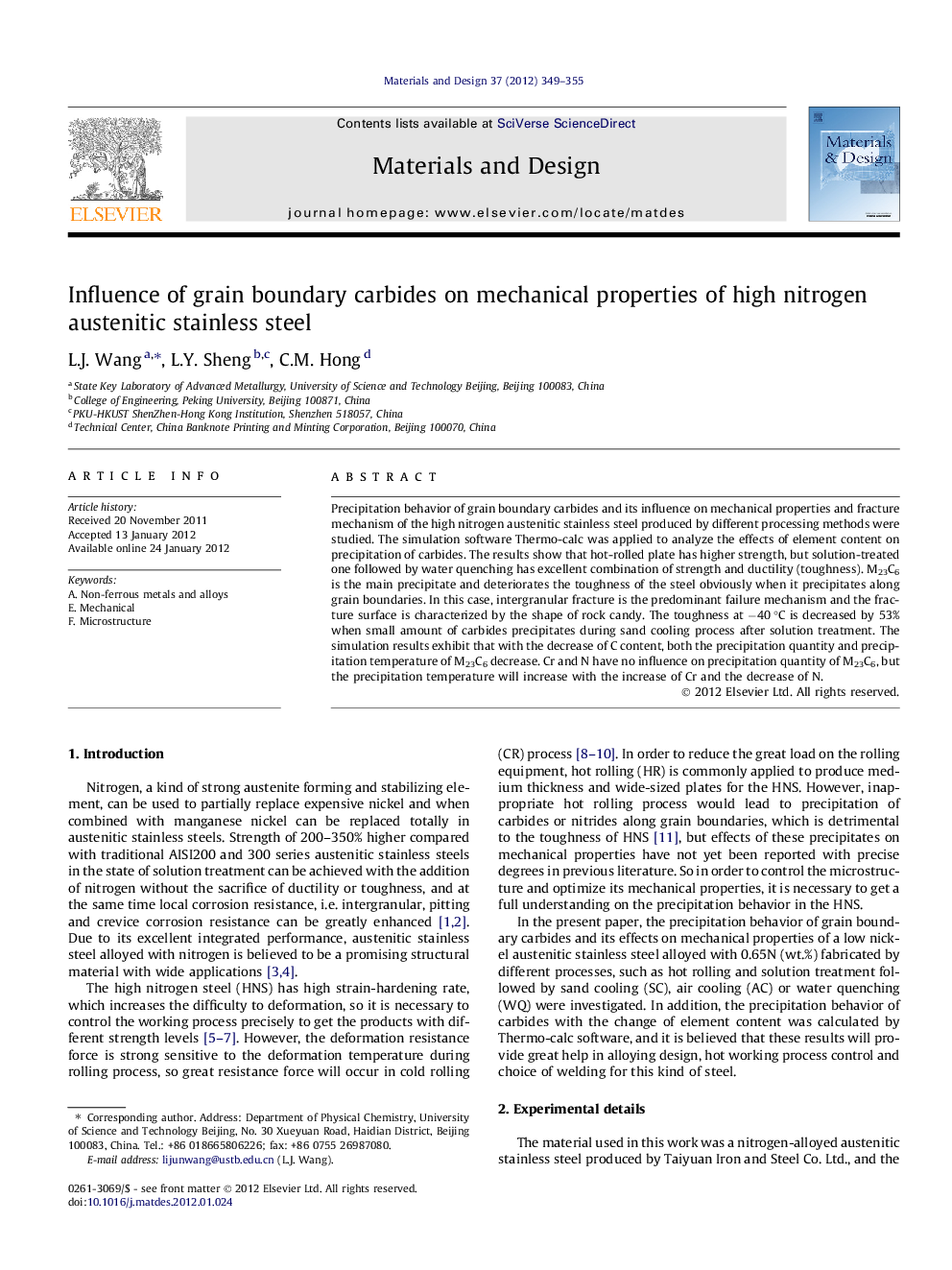| Article ID | Journal | Published Year | Pages | File Type |
|---|---|---|---|---|
| 830771 | Materials & Design (1980-2015) | 2012 | 7 Pages |
Precipitation behavior of grain boundary carbides and its influence on mechanical properties and fracture mechanism of the high nitrogen austenitic stainless steel produced by different processing methods were studied. The simulation software Thermo-calc was applied to analyze the effects of element content on precipitation of carbides. The results show that hot-rolled plate has higher strength, but solution-treated one followed by water quenching has excellent combination of strength and ductility (toughness). M23C6 is the main precipitate and deteriorates the toughness of the steel obviously when it precipitates along grain boundaries. In this case, intergranular fracture is the predominant failure mechanism and the fracture surface is characterized by the shape of rock candy. The toughness at −40 °C is decreased by 53% when small amount of carbides precipitates during sand cooling process after solution treatment. The simulation results exhibit that with the decrease of C content, both the precipitation quantity and precipitation temperature of M23C6 decrease. Cr and N have no influence on precipitation quantity of M23C6, but the precipitation temperature will increase with the increase of Cr and the decrease of N.
► The toughness of high nitrogen stainless steel is seriously deteriorated by grain boundary carbides. ► Hot-rolled high nitrogen steel has higher strength. ► Solution-treated one with water quenching has excellent combination of strength and ductility. ► The precipitation quantity and precipitation temperature of M23C6 decrease with decreasing C content.
